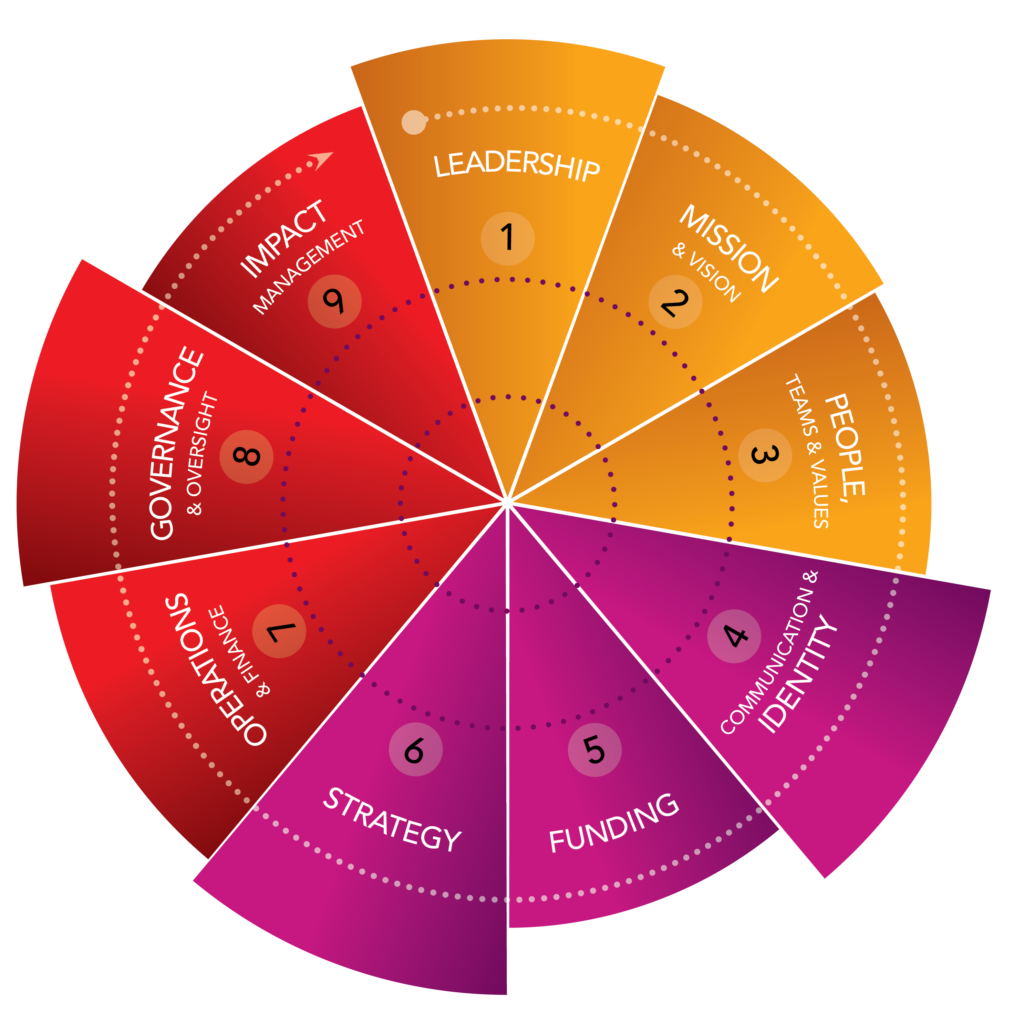Non-profit organisations operate within a complex ecosystem. They navigate many challenges and opportunities as they strive to achieve their missions. This complexity often poses hurdles for leaders, demanding a delicate balance between strategic growth and maintaining a healthy organisational culture. In this article, Mergon Foundation’s Ian Conolly discusses the critical link between the health of an organisation and its performance, shedding light on the importance of nurturing vibrant and healthy organisational practices.
Jim Collins, in the foreword of the book Engine of Impact, says ‘it is substantially more difficult to build a great social sector organisation than to build a great business corporation of similar scale. And that is why the best-run, most impactful non-profits stand as some of the most impressive enterprises in the world.’
‘The best non-profits are truly spectacular,’ said Kim Jonker in a conversation about this book. ‘They will take your breath away.’ And yet most non-profits limp along, operating far below their potential impact.
Research shows that 80% of organisations perform better when they prioritise growing the health of their organisation. ‘Think about it for a moment,’ says Ian, ‘if you’re a vibrant organisation with teams that are united towards a common mission, a clear strategy and great leadership, a natural outflow will be an increase in performance.’
Higher engagement and productivity can result in many benefits. Funding is one such example. If an organisation approaches a donor for funding, and the donor experiences the organisation as one with a clear strategy, strong team dynamics, a healthy internal culture, and good governance, they are far more likely to see it as a good investment opportunity.
The challenges leaders face
If you’re a non-profit leader, chances are that you’ve shed some tears over the years. Leading is tough. Leaders get misunderstood, judged, hurt and exhausted. There is a need for revitalisation and a supportive community for non-profit leaders, especially because so many leaders are feeling isolated in their journey. Not only that, but they also have pressure from funders who want to see the numbers… the impact of the work on communities… and while this is well-intentioned, it often compels organisations to stretch their resources thin, potentially leading to unhealthy organisational environments.
Says Ian, ‘For us at Mergon there has been an increasing awareness of, and a focus on, the health of leaders and of organisations. We believe that healthy leaders leading healthy organisations have the most sustainable impact. We know that when an organisation is healthy the maximum energy can be focused outward on mission impact.’
Three core practices of healthy organisations
A few years ago, Mergon Foundation built the OSP Scan (Organisational Self-Perception Scan) as a tool to serve our partners. The question we asked is ‘What does a healthy organisation look like?’
After much research, we recognised three practices that healthy organisations do that help them to thrive, namely People Practices, Thinking Practices, and Governance Practices.

‘The first thing you usually notice in a healthy organisation is a thriving team. There is great leadership and a clear mission, a sense that everyone is in it together,’ notes Ian.
‘In addition to having great people on your team, healthy organisations tend to have great strategy and clear thinking around where they want to go. If the team is strong, but your strategy and thinking are limited, your mission impact is going to be held back. On the other hand, if the strategy is clear but the team environment is toxic, you won’t achieve your impact potential, says Ian.’
He adds, ‘The third practice involves governance, which means using controls and measures to ensure accountability to all stakeholders for our decisions, to ensure we’re achieving our desired impact, and that we have external oversight enabling us to stay on track.’
When these three practices are strong, we see organisations start to thrive.
Nine core areas of healthy organisations
Ian explained that these three practices can be further divided into three core areas each, totalling nine in all.
People practices: Leadership, Mission & Vision and People, Teams & Values
Thinking practices: Communication & Identity, Funding & Strategy
Governance practices: Operations & Finance, Governance & Oversight and Impact Management

With these nine areas identified, the Mergon Foundation launched the OSP Scan. This tool has already guided 618 participants from 80 organisations through the process over the last three years, providing valuable data that enhances our ability to better address our partners’ needs moving forward.
The priority of growing healthy organisations
We conducted a survey of over 100 non-profit organisations from 21 different countries in Africa. We asked them to rate their current organisational health and how important growing a health organisation is for them. The response was overwhelmingly positive, with 94% saying that strengthening their organisation’s health is either growing in importance or already a work in progress.
We also asked what topics would be most helpful to the leaders for the growth of their organisations. Our survey found that developing a fundraising strategy, planning team capacity, and learning how to raise up great leaders were the top three areas, highlighting consistent needs across these organisations.
It is exciting to see that leaders of non-profit organisations are increasingly prioritising the growth of their people and organisational capability. As we gather data and understand the needs of leaders in a deeper way, we as funders can partner together to advance mission impact through healthy organisations.
Introducing FiftyFour
Now with a clearer view of their organisational strengths and areas requiring attention, leaders were left asking, ‘How do we take practically take the next step in growing our organisation’s health?’ Quite simply, ‘where to from here?’
As a team, we began imagining ways to support them in taking this critical next step on their journey. That’s when an idea of a learning platform started to emerge. We envisioned a place of connecting and learning from seasoned leaders and practitioners with specialist skills in a core area; people who, having gone before us, understand the challenges leaders face. It would be a space for practical equipping and capacity building, fostering a community of peers on a shared journey towards advancing their organisational health. It was in this collaborative vision that FiftyFour was born.
An online learning and capacity building platform, FiftyFour is designed to guide leaders towards growing healthy organisations that will have impact for generations to come. As a collaboration with the Mergon Foundation, MacClellan Foundation and 3W Foundation, the FiftyFour platform is currently undergoing substantial pilot testing and will be launching broadly to non-profit leaders in 2024.
Built to serve leaders to grow their organisations, the platform centres on four pillars: assessment tools, impactful courses, connection with other leaders, and data & research. These benefits provide leaders the opportunity to assess their needs, access applicable learning, learn from peers and understand data from their region that can inform their growth.
All this is free to leaders, wherever they may be around the world! Register and start your learning journey today at www.fiftyfourcollective.com.
